Key takeaways:
- Selective mutism is an anxiety disorder that hinders children’s ability to speak in certain social situations, despite their verbal skills at home.
- Creating a supportive environment, including understanding teachers and empathetic peers, plays a crucial role in helping children find their voice.
- Practicing communication techniques, such as role-playing and using visual aids, can significantly boost confidence in social interactions.
- Gradual exposure to speaking situations, starting with familiar faces and small groups, helps ease anxiety and builds self-esteem over time.
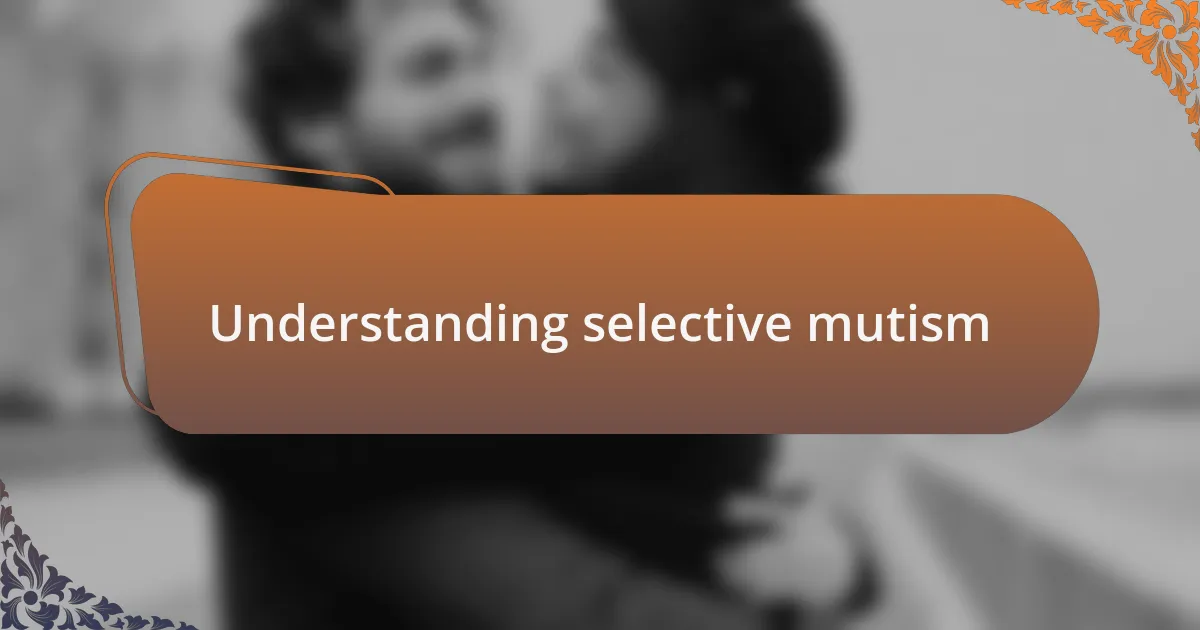
Understanding selective mutism
Selective mutism is a complex anxiety disorder primarily affecting children, characterized by an inability to speak in specific social situations despite the ability to communicate comfortably in other settings, like home. I once spoke with a parent whose child would light up at home, chatting non-stop, but would freeze in the classroom, refusing to utter a word. It made me realize how heartbreaking and frustrating this disconnection can be, not just for the child but for the parents too.
Many might wonder why a child who is verbal at home can’t express themselves in public. I’ve seen how overwhelming it can be for children to face the pressure of expectations in unfamiliar environments, and the fear of judgment can be paralyzing. Reflecting on this, it’s crucial to understand that selective mutism isn’t simply shyness; it’s a genuine struggle that requires empathy and support.
At the root of selective mutism is often a deeply ingrained fear of social interaction. When I first learned about this condition, I couldn’t help but empathize with the children who might feel trapped in their silence, yearning to be heard yet petrified of the response. Understanding these underlying emotions is vital in creating an inviting space for them to gradually find their voice again.
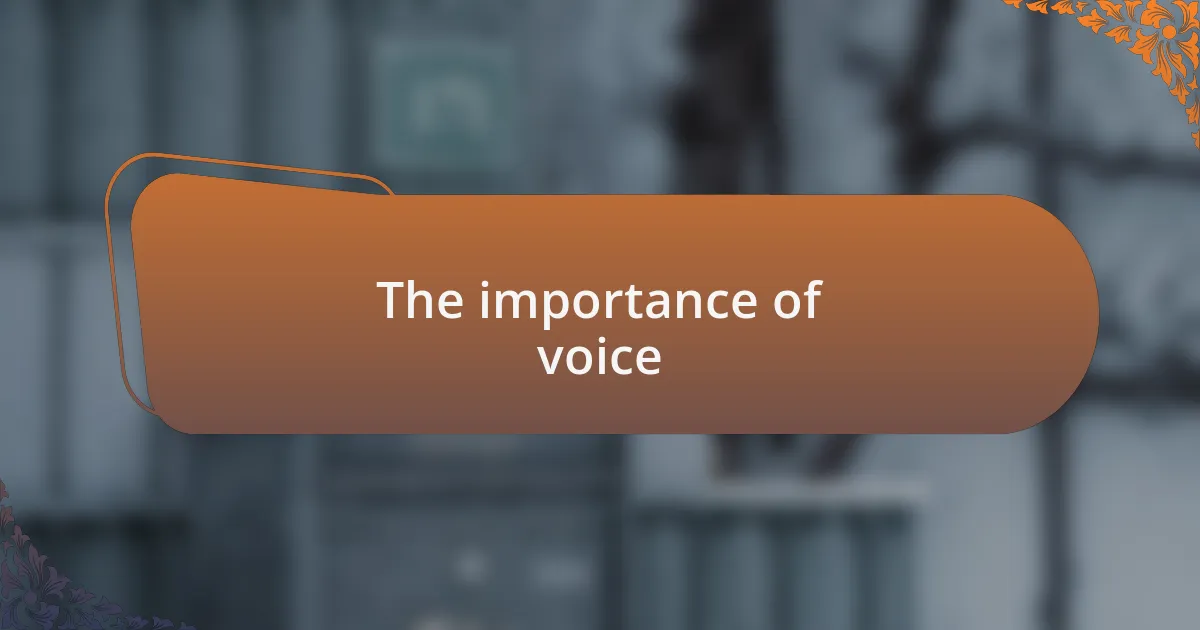
The importance of voice
Finding one’s voice is fundamental to a child’s emotional well-being and development. I recall encouraging a young girl to express herself more openly. After weeks of silent days in her classroom, the moment she finally whispered her thoughts was magical; it was like watching flowers bloom after a long winter. This simple act of spoken word not only bridged a gap between her and her peers but also ignited a spark of confidence within her.
The inability to speak can create significant barriers to connection and understanding. When we consider the many ways communication enriches our relationships—how it allows for laughter, support, and expression—it’s heartbreaking to think of the children who feel unheard. I often reflect on moments when I felt voiceless, and I can only imagine how powerful it must feel for them to finally break that silence and share their thoughts.
Ultimately, every voice carries a story worth telling. It’s in those shared narratives, I believe, that empathy thrives. I remember my own experience of sharing a personal story in a supportive environment; it was both liberating and reinforcing. For children facing selective mutism, giving them the chance to find and share their voice can lead to not just individual growth, but the building of a compassionate community where everyone feels valued and understood.
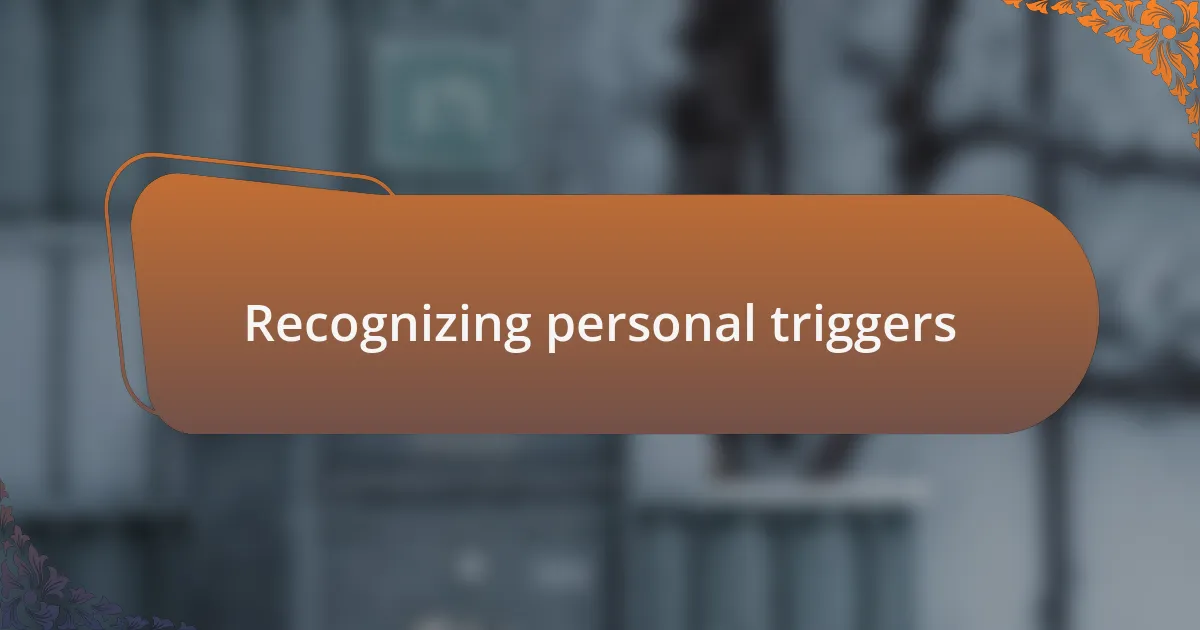
Recognizing personal triggers
Recognizing personal triggers is a crucial step in understanding and navigating the experience of selective mutism. I remember attending a school meeting where the atmosphere felt overwhelmingly tense. It struck me how my heart raced and my voice felt trapped in my throat. This taught me that certain environments or social situations can act as triggers, heightening anxiety and silencing me when I needed to speak.
In my journey, I’ve learned to identify specific situations—like large gatherings or unfamiliar places—that tend to provoke my silence. The other day, I found myself in a crowded cafe, and the chatter around me became a swirling noise that drowned out my thoughts. Have you ever felt that way? Recognizing these patterns helps not only in preparing my responses but also in offering a sense of control in moments that feel overwhelming.
Reflecting on these triggers has been a game-changer. A few years ago, I started journaling whenever I felt particularly muted. Not only did this help me articulate my thoughts, but it also revealed consistent themes in my experiences. For instance, I noticed I struggled most when seeking validation in larger groups. This discovery empowered me to approach my triggers proactively, fostering a deeper understanding of my emotional landscape and, ultimately, paving the way for my voice to be heard.

Building a supportive environment
Creating a supportive environment plays a vital role in easing the challenges of selective mutism. I remember when my family made small adjustments at home, like lowering the volume during dinner conversations. This simple shift transformed our mealtime into a haven, allowing me to express myself slowly and comfortably. Have you ever noticed how your surroundings can affect your willingness to speak? It’s incredible how a little thoughtfulness goes a long way.
In school settings, I found that having a trusted teacher who understood my struggles made all the difference. I can still recall the day my teacher pulled me aside and suggested we work together on a project with a smaller group. It was as if she created a safe bubble around me. Her encouragement felt like a gentle nudge, allowing me to share ideas without the pressure of a larger audience. When I think back, I realize that sometimes, all it takes is one supportive presence to ignite the courage to speak.
On a community level, fostering understanding among peers also contributes significantly to building that safe space. I once organized a small workshop where we explored the topic of selective mutism and shared personal experiences. Witnessing the participants listen attentively and acknowledge one another’s feelings was powerful. It became clear that creating a culture of empathy fosters connection and empowers individuals to find their voices, no matter how quiet they may feel. What strategies have you found effective in nurturing a supportive environment?

Practicing communication techniques
Practicing communication techniques is essential for anyone navigating the challenges of selective mutism. I remember when I first started using simple tools like flashcards with pictures or words to express my thoughts. This not only bridged the gap between my feelings and my voice but also allowed me to see the power of non-verbal communication. Have you ever tried a similar approach? It can be surprisingly effective.
Role-playing scenarios helped me feel more at ease in various settings, like school or social gatherings. I often practiced with a close friend, pretending we were in a café, ordering our favorite drinks. By simulating real-life conversations, I gradually built my confidence, making the actual experiences less daunting. How do you practice your conversational skills?
Moreover, finding a routine for practice can make a significant difference. I set aside a few minutes each day to speak aloud in front of a mirror or record myself reading a passage from my favorite book. The act of speaking, even when alone, played a big part in acclimating my voice to different situations. What little rituals have you found beneficial in your ongoing journey towards confident communication?
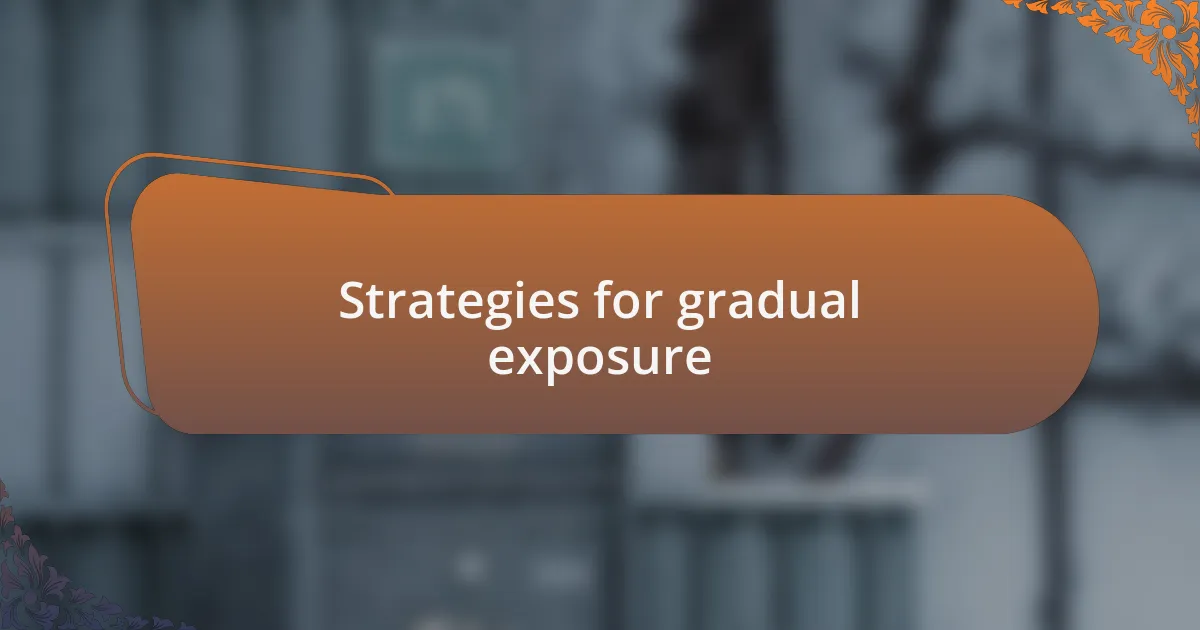
Strategies for gradual exposure
Gradual exposure can be a game changer in overcoming the challenges of selective mutism. I remember my first step involved initiating brief conversations with a friendly cashier at my local store. Each time I returned, I grew a little bolder, sometimes even adding a compliment or sharing a small joke. Have you considered starting with familiar faces to ease into speaking?
Another effective strategy was to expand my comfort zone gradually. I started by whispering responses at home before moving on to sharing my thoughts with trusted friends during small group gatherings. It was astonishing how each tiny step made the next one feel less intimidating. How often do you push your limits just a little to see what you can achieve?
Finally, I often reflected on my experiences after each exposure exercise. Keeping a journal allowed me to process my feelings and celebrate small victories, no matter how insignificant they seemed. It was empowering to see my fears transform into achievements over time. What have you learned about yourself through your own exposure journeys?
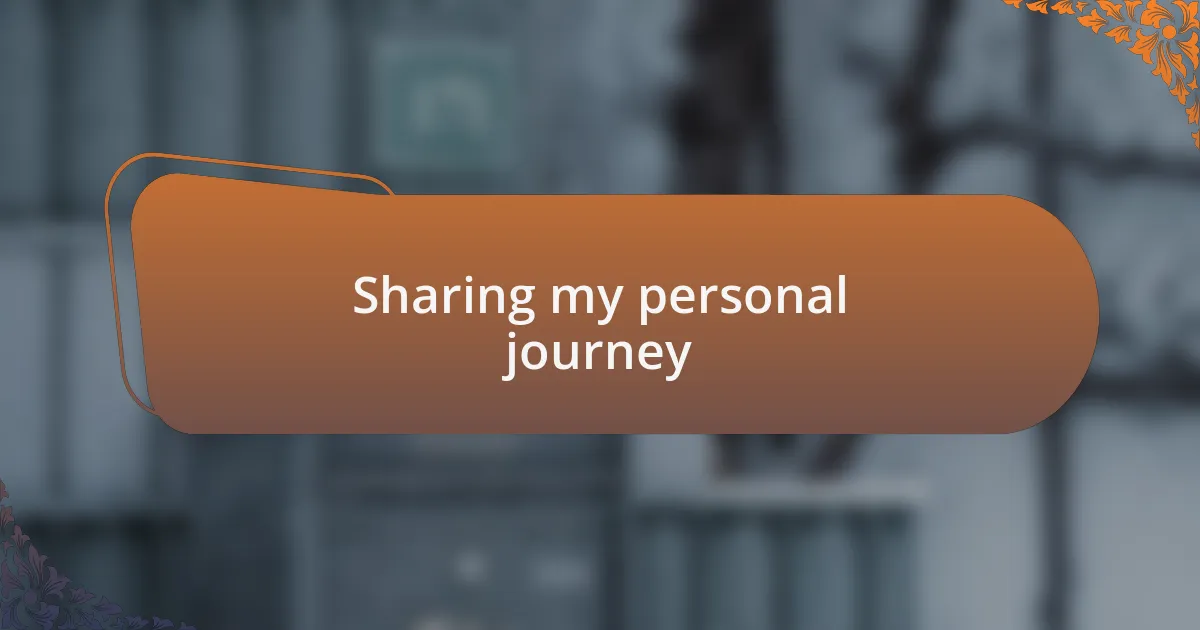
Sharing my personal journey
Sharing my personal journey has been a profound aspect of my growth with selective mutism. I vividly recall my first experience speaking in a group setting; the nerves were palpable, yet I felt a push from within. As I stumbled through the words, the friendly nods from my peers reminded me that I was not alone. Have you felt that spark of encouragement from those around you?
One defining moment was during a family gathering. I was nervous and considered retreating into silence, but I decided to speak up when my uncle asked about my latest project. I took a deep breath and felt the warmth of their attention. After I finished, their praises flooded in, lighting up my spirit. Isn’t it fascinating how a simple conversation can shift your perspective and build your confidence?
Reflecting on these moments, I discovered the importance of vulnerability. I often hesitated to share my thoughts out of fear of judgment, but opening up brought a sense of freedom. Each shared story was a revelation, not just for me, but for those listening as well. Have you noticed how sharing your voice can create connections and foster understanding?